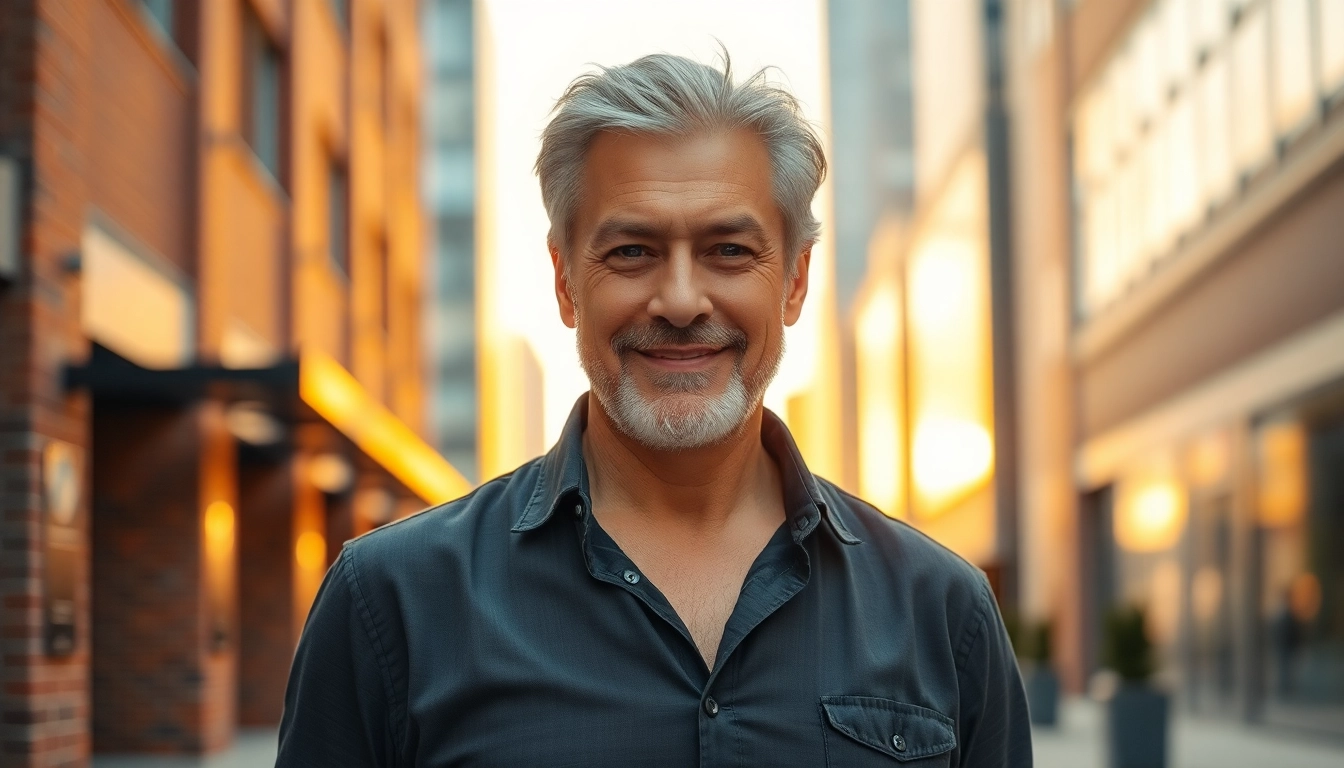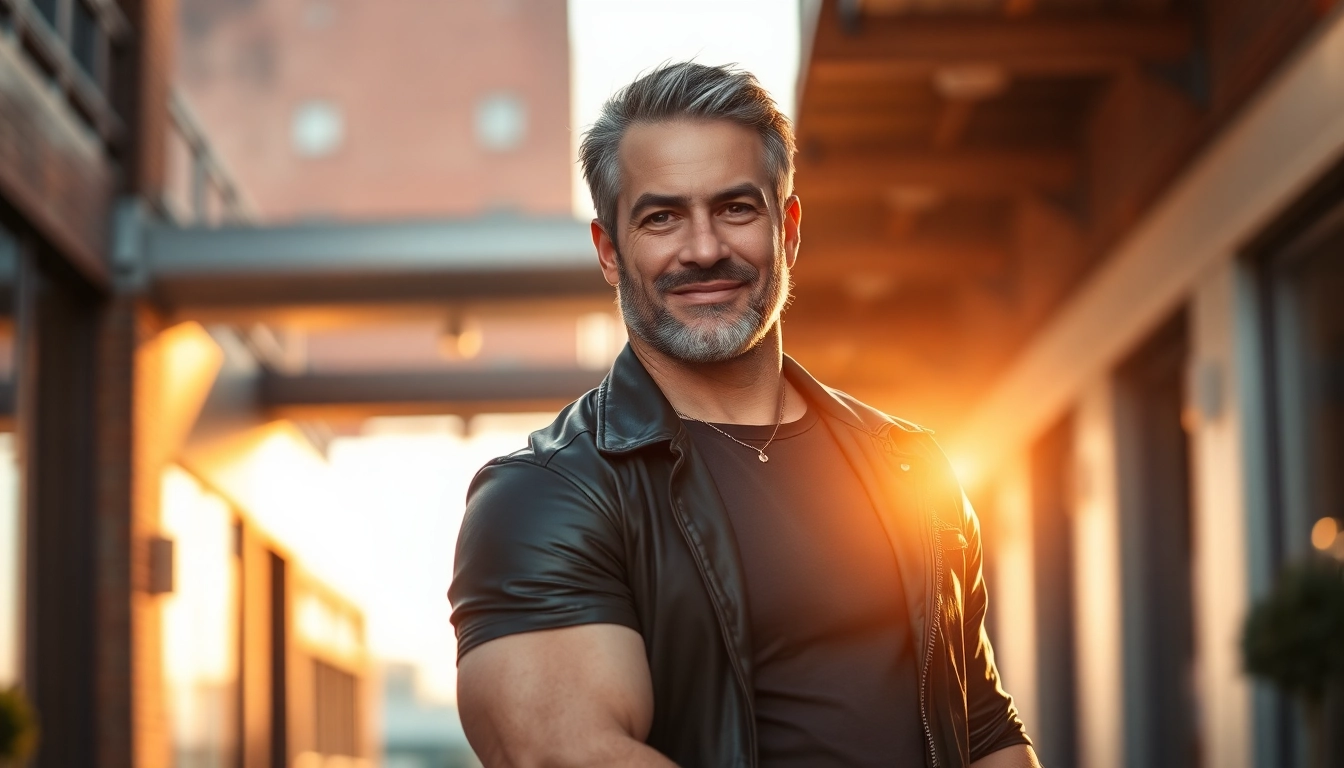Introduction to the Term DILF: Definition and Origins
The term dilf meaning has gained significant traction in modern slang and pop culture, encapsulating a specific archetype of attractive, mature men who exude both confidence and charisma. Originating as a playful twist on the well-known acronym MILF, which stands for “Mom I’d Like to Friend” or more explicitly, “Mom I’d Like to F*,” DILF stands for “Dad/Daddy I’d Like to F*.” Despite its literal connotations, the term is often used humorously or affectionately to describe older men who possess a certain rugged charm or parental maturity combined with physical appeal. Interestingly, a man does not necessarily need to be a father to be called a DILF—it’s more about the aura of maturity and attractiveness that the term connotes.
The emergence of DILF as a colloquial term can be traced back to the early 2000s, closely following the rise in popularity of MILF in mainstream media, especially after the success of the “American Pie” franchise. While MILF often referred to attractive older women, DILF shifted the focus onto men, emphasizing a different kind of allure—masculine, protective, and often physically fit. The term’s playful nature allowed it to quickly permeate internet culture, social media, and entertainment, transforming it into a widely recognized label that both celebrates and humorously critiques societal standards surrounding attractiveness and maturity.
The Cultural Evolution of DILF and Its Popularization
The evolution of the DILF term is closely intertwined with shifts in societal perceptions of masculinity, aging, and attractiveness. Initially, the term gained popularity within online communities, social media platforms, and among fans of pop culture referencing older, attractive men in a humorous or admiring manner. It became a symbol of celebrating the rugged, confident, and often fatherly archetype that defies traditional notions of youth-centric attractiveness.
Popular culture played a pivotal role in normalizing and spreading the concept of DILFs. The film “American Pie Presents: The Book of Love” (2009) notably introduced a DILF character—Rob’s father—who embodied many qualities associated with the term: mature, attractive, and charismatic. The film’s humor and popularity helped to solidify the association of DILFs with a specific type of older, good-looking man, often with a sense of humor and confidence.
Television series like Netflix’s “Riverdale” further contributed to the popularization of DILFs through characters such as Fred Andrews. Fans widely regarded Fred as a quintessential DILF, thanks to his rugged appearance, leadership qualities, and protective nature. These portrayals helped redefine the archetype as one that combines maturity with an appealing physical presence, resonating strongly with audiences worldwide.
DILF in Films and TV Shows: Notable Characters and Moments
Movies and television have been instrumental in shaping the public perception of DILFs, often portraying them as attractive, confident, and sometimes humorous figures. Beyond “American Pie,” other notable examples include characters from various genres that embody the DILF archetype, either intentionally or through fan interpretation.
Rob’s Father in “American Pie Presents: The Book of Love”
This 2009 comedy film brought the DILF character into the limelight, depicting Rob’s father as a charismatic, attractive older man who exudes both paternal warmth and sexual appeal. The character’s portrayal played on humorous stereotypes of older men who still possess youthfulness and attractiveness, reinforcing the playful yet respectful tone surrounding the term.
Fred Andrews in “Riverdale”
Since its debut in 2017, the Netflix series “Riverdale” has introduced audiences to Fred Andrews, the father of protagonist Archie Andrews. Fans of the show often describe Fred as the quintessential DILF—he’s rugged, handsome, and embodies the qualities of a strong, caring father figure. His portrayal has contributed significantly to the modern image of DILFs, blending masculinity with emotional depth.
Other Notable Mentions
In addition to these prominent characters, various other films and TV shows have featured older male figures who fit the DILF mold. These characters often combine physical attractiveness with traits like maturity, confidence, and protectiveness, making them both aspirational and relatable figures within popular culture.
Internet Culture and Social Media: DILFs of Disneyland and Online Communities
The internet has played a crucial role in popularizing and diversifying the concept of DILFs. Social media platforms like Instagram, Reddit, and TikTok have created spaces where fans and casual viewers alike can celebrate and discuss their favorite DILF figures openly and humorously.
DILFs of Disneyland
One of the most iconic examples of internet culture celebrating DILFs is the Instagram account DILFs of Disneyland. With over 300,000 followers, this account shares candid photos of DILFs spending time with their families at Disneyland, capturing moments of joy, youthfulness, and attractiveness. These images challenge traditional stereotypes by showcasing middle-aged men who are both family-oriented and physically appealing, often with humorous captions emphasizing their DILF status.
This social media phenomenon highlights how the DILF archetype has become intertwined with everyday life, emphasizing the idea that attractiveness and maturity are not mutually exclusive. It also underscores the playful and humorous tone that surrounds the term, fostering a community of fans who appreciate the combination of fatherly charm and physical appeal.
Online Communities and Reddit
Reddit hosts a vibrant, NSFW community called r/DILFs, which boasts nearly 100,000 members. This community serves as a space for sharing photos, stories, and discussions centered around DILFs, often emphasizing appreciation for older men who possess attractiveness and charisma. The community maintains a playful and respectful tone, celebrating the archetype while also fostering a sense of camaraderie among members.
Through these online spaces, the DILF concept has expanded beyond casual admiration to become a cultural phenomenon, blending humor, appreciation, and a touch of sexuality. These platforms also serve as a reflection of changing attitudes towards aging and masculinity, challenging stereotypes about attractiveness and maturity.
The Role of DILF in Modern Pornography and Search Trends
The influence of DILFs extends into adult entertainment, where the term has become a popular tag used by performers and consumers alike. As the internet revolutionized the accessibility and diversity of pornography, niche categories like DILF gained prominence, reflecting broader societal shifts toward acceptance and celebration of varied expressions of sexuality.
Popularity as a Search Term
Data indicates that searches for “DILF” spike regularly, often correlating with trends in pop culture, celebrity appearances, or viral social media content. The term’s popularity is also reinforced by its appearance as a tag on adult websites, where it helps users find content featuring older, attractive men who fit the archetype.
Impact on Pornographic Content
Content creators increasingly produce videos and photos targeting the DILF demographic, emphasizing traits such as rugged masculinity, confidence, and physical fitness. The portrayal of DILFs in adult media often combines humor and sexuality, aligning with the playful tone of the internet communities that celebrate them. This trend signifies broader societal acceptance of older men as objects of desire, challenging ageist stereotypes prevalent in traditional media.
The Broader Impact and Perception of the DILF Term
The rise of the DILF term has had a notable impact on societal conversations about masculinity, aging, and attractiveness. It has helped normalize the idea that older men can be just as desirable, if not more so, than their younger counterparts. This shift influences how media portrayals are crafted, encouraging more diverse and inclusive representations of masculinity.
Moreover, the playful and humorous connotations of DILF have contributed to destigmatizing discussions about sexuality among older men. It also fosters a sense of community and appreciation among fans and admirers, who see attractiveness as multifaceted and not limited to youth.
However, some critics argue that the term perpetuates superficial standards and might objectify men, reducing their value solely to physical appearance. Despite this, many embrace the term as empowering, celebrating men who defy aging stereotypes and embody attractiveness at any age.
Conclusion: DILF in Contemporary Society and Media / Understanding the DILF Meaning
In summary, the dilf meaning has evolved from a humorous internet slang to a recognized archetype within popular culture and online communities. Its rise reflects broader societal changes in attitudes toward masculinity, aging, and sexuality, emphasizing that attractiveness is not confined to youth. From film and television portrayals to social media phenomena like DILFs of Disneyland and Reddit communities, the archetype continues to resonate with diverse audiences worldwide.
Understanding the DILF term requires recognizing its nuanced role in both humor and admiration, as well as its significance in the ongoing dialogue about age, attractiveness, and masculinity. As society continues to evolve, so too will the ways in which we perceive and celebrate older men who embody this compelling archetype, making the DILF concept a fascinating lens for examining contemporary culture.

